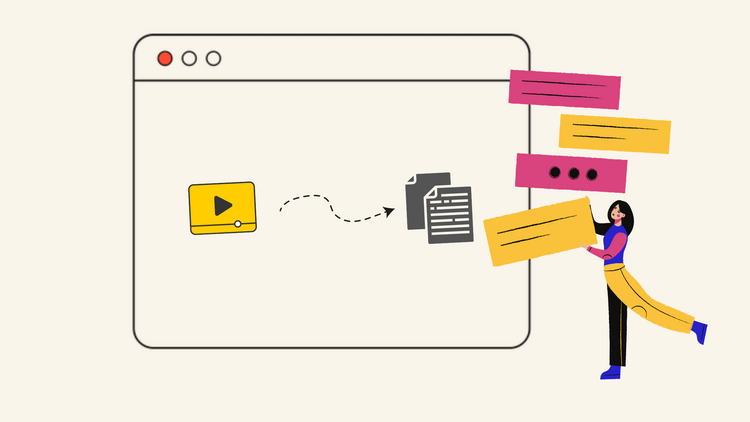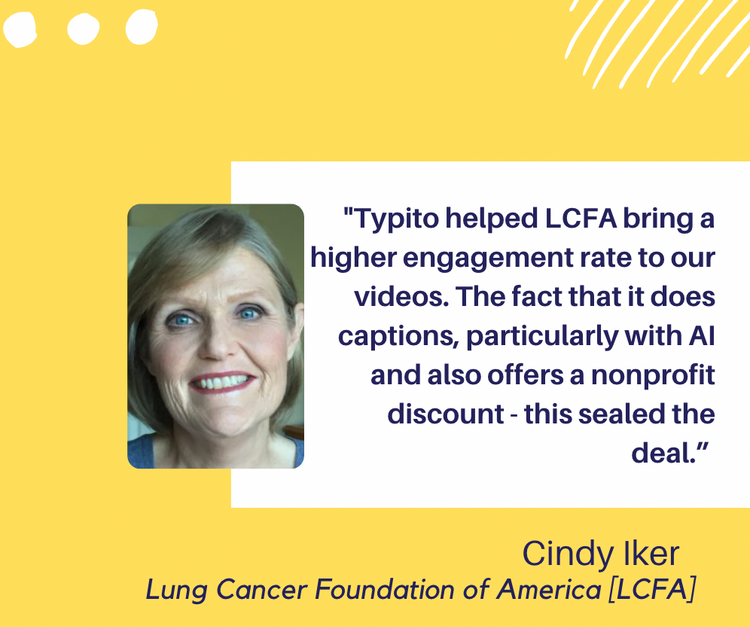7 Different Types of Explainer Videos with Best Examples
Explainer videos are one of the most effective ways to introduce a concept or subject in a more succinct way. Whether it’s a quick overview of what your brand is about or talking about a product/service, explainer videos are an easy entry point for people who aren’t aware of your brand.
Explainer videos combines two essential factors to explain an idea or a concept in a simple yet understandable way:
- Visual stimulus
- Audio
An explainer video is an ideal way to break down an idea or a process in an easy way. Instead of providing audio or text, all types of explainer videos use both—which is a proven methodology to increase an individual’s message retention and thus, an effective video marketing strategy too. (Source: National Library of Medicine)
An explainer video is a powerful and effective way to convey your product’s value to your customers.
There’s an art to making explainer videos, that isn’t very simple to nail. Just do a quick Google search on different types of explainer videos or perhaps, explainer video examples, and you will have thousands of results showing up but not all of these are great examples. And even if some are, it’s hard to tell if a particular type of explainer video will really work for your marketing needs.
When you plan to make an explainer video, what’s more, important is to find the right style for your brand. A few styles might work perfectly for your brand or the product assets that you have but others might not fit them at all.
We’ve put together a guide to break-down the different types of explainer videos you can create along with some excellent examples to spark some inspiration!
Did you know?
Common Craft published the world’s first-ever explainer video on YouTube in 2009. The company worked on a campaign for Dropbox at that time and helped them create a video that could explain how the tool worked. And that’s how the market for explainer videos emerged. Interestingly, that little video created for DropBox resulted in 10+ million users registering for the service.
What are Explainer Videos?
Explainer videos are short (1 to 2 minutes), often animated videos, that help introduce a new brand or demonstrate a product to potential customers. A good explainer video should be able to answer two basic but important questions:
- How does your product or service solve a specific problem?
- Why will a viewer want to use it?
There are different types of Explainer Videos, from animation to live-action, 3D, and more. Interestingly, they come in other genres, too, using drama or comedy, depending on the video’s theme. This also means you can explore the use of a wide range of emotional tactics and design options to convey your brand’s message.
One of the best things about explainer videos is that they leave a substantial impact on the audience. That’s why they are most often placed on a website’s home page, the main product page, or a landing page. Explainer videos have become popular over the years and help increase conversion rates considerably.
Why are Explainer Videos Effective?
There’s no doubt that video is one of the best ways to create brand awareness and share information. But from all other types of brand videos, explainer videos are among the most dominant marketing tools that every business should consider leveraging.
It is also important to note that as the human attention span has shortened (according to BBC), creating a video that could help consumers understand what service or product does, and what makes it so important. And they’d prefer to know this instantly without having to go through 10 or 20 pages on a website.
That’s why explainer videos have become the most effective and essential form of content brands can publish.
45% of brands using video marketing techniques will have a good explainer video as their key strategy to promote their products or services. 83% of these brands said that an explainer video placed on the home page works effectively. (Survey source: WYZowl.com)
No matter what your brand is about, you have various explainer video styles to choose from and when done right, “product explainer videos” help with these factors:
- Associate Better with Potential Customers
- Augment Business Presentations
- Boost Conversion Rates
- Lift the sales
Before we move ahead with different types of explainer videos or styles, there are some important statistics that are worth knowing.
- Emails with an explainer video in them tend to have 300% higher click rates. In fact, interactive email letters tend to boost the click-to-open rates by at least 73%. (Source: GetResponse)
- 93% of the brands who use a good explainer video say that it has helped their customers understand their product or survive better. (Source: WYZowl)
- Explainer videos help affect the SEO results positively and are 50x more helpful in driving organic results than plain text. (Source: Tubular Insights)
- 83% of the businesses say that an explainer video, when placed on the homepage, tends to be very effective. (Source: Wyzowl)
- 73% of the users tend to buy a product or service after seeing an explainer video. (Source: Tubular Insights)
So far, we’ve talked about what explainer videos are, how effective they are, and why you should consider including explainer videos for your brand.
Now it’s time to look at examples of the different types of explainer videos and how you can use them for your business needs. At the end of this blog, we assure, that you will have a better understanding of how to take your marketing efforts to the next level.
Types of Explainer Videos to Use for Your Brand
Here are some fabulous explainer video styles used across different business industries, publications, and media outlets. These are a great way to drive inspiration from.
1. 2D Motion Graphics or Animated Explainer Videos
2D animation is one of the primary types of animation, which is used for creating cartoons, animated movies, advertisements, marketing videos, games, educational materials, and much more. They are made by manipulating images, which can be either custom designed or sourced from stock images.
Benefits of 2D Motion Graphics:
- Explains complex topics in a simplified way
- High engaging and effortlessly consumed
- Effective solution for branding
- Provides a multi-sensory experience
- Boosts the dwell time
Here’s an example of a Mailchimp’s 2D animated explainer video that presents the entire platform with not just animation but also music and, a professional voice-over.
2D animation (or traditional animation) involves creating storyboards, backgrounds, and characters in a two-dimensional environment.
Though they are less expensive than 3D animation, there might be times when certain explainer videos might need additional detailing, which can be only accomplished with the help of 3D animation. So it depends on what you are creating and what approach you’re using.
Overall, 2D motion graphics are one of the best styles for explainer videos. They are ideal for tech animations, app demos, corporate explainer videos, and financial graphics.
2. 3D Animated Explainer Videos
When you create three-dimensional moving images on a digital platform, it’s called 3D animation. This is one of the most common styles for explainer videos.
Benefits of 3D Animation:
- Visually richer
- Creates better branding
- Interesting visual effects
- Attracts user engagement
- Excellent precision view
Here’s an example of a creative 3D animated explainer video from Dropbox.
Whether it is an exploded visual of a product or a 360° fly-around, there’s no doubt that animating it in 3D gives the audience a perspective that makes them different.
In the above 3D video example, you’ll notice that Dropbox has gone an extra mile in delivering what’s pleasing to the modern-era audience. There are a few things that you need to see in 3D just to have that A-ha moment! The tool is clearly explained, frame by frame, allowing users to comprehend what the tool does in less than 2 minutes.
3D animated explainer videos are much more detailed, depicting situations that you can’t in real life, with the help of products that don’t exist.
A 3D Animated explainer video is also life-like when compared to animation forms, helping your viewers visualize the context better and making them understand how your product can help solve their problems. Overall, they are entertaining, engaging, and give a better visual experience.
3. Whiteboard Animation Explainer Videos
Whiteboard animation is a type of video style, which is created to look as if the content is being drawn by hand on a white background or whiteboard. Videos like this are a great way to communicate complex topics because the graphics used in such videos help simplify and break down concepts visually.
The illustrations are accompanied by a good narration to help the audience walk through the whole story. The beauty of whiteboard animations is that they are simple and yet engaging.
Benefits of Whiteboard Animations:
- Extremely versatile
- Keeps the viewers engaged
- More memorable than other video types
- Ideal for marketing & educational videos
- Better information Retention
Here’s an example of an awesome whiteboard animation video.
In the above whiteboard animation video, you will notice that the creator has smartly made the audience understand what the book "The All-or-Nothing Marriage" is all about. It broke the concept of marriage and love fluently and accurately.
The creator has made the topic more memorable and digestible for viewers and helped increase the attention spans.
Whiteboard animations were originally created to film someone physically drawing on a white surface. Not only was this time-consuming but also required excellent artistic abilities.
As technology advanced, creating whiteboard animations became a lot easier. Unlike live-action videos, you don’t need expensive equipment or experience to make one. In fact, you could create one all by yourself, if you sign-up for a good tool.
Many brands use this type of video style to create video tutorials if they have elaborate services/processes or workflows, as it helps customers not just understand the concept better but also holds better user attention.
The blend of visuals and a voiceover appeal to the senses, keeping the viewers engrossed with the way animations are being drawn and further, increasing the curiosity of what will happen next.
4. Live Action Explainer Videos
Live-action is a type of videography or cinematography, which uses photography rather than animation. A few videos combine live-action and animation to make live-action animated footage. It defines video games, films, or other visual media.
Benefits of live-action videos:
- Carries an instructive, authentic tone
- Has a human touch
- People relate better
- Emotions are conveyed better
- Opportunity to use brand ambassadors
Here’s an example of a good live-action explainer video by Hiver.
Live-action videos work great when you want to address the audience directly and that’s exactly what the creator has done in the above video. The way the character and the narrator explains the story, it creates a sense as if you’re living that situation, every single day.
The motion graphic overlays are perfectly done and that’s the reason it speaks to the audience and creates an urge to click the CTA once you’re done watching the video.
The production costs for live-action can be costly. Moreover, if you add additional elements like actors, crew, and locations, the cost skyrockets. On average, a 30 to 40-second live-action video costs anywhere from $20,000 to $200,000. If you can find a way to film in a home setup, things will be cost-effective, and it might also make the video more engaging.
5. Screencast Explainer Videos
Screencast explainer videos are another form or style that includes a digital recording of the computer screen along with a voice-over to help viewers understand what’s happening. These are also called video screen capture and are super easy to produce. Most importantly, they cost less than live-action or animated videos.
Benefits of Screencast Explainer Video:
- Clear, simple and informative
- Less expensive and straightforward
- Ideal for start-ups
- Delivers clear instructions
- Helps absorb the information better
Here’s an example of Salesforce’s screencast explainer video.
The main purpose of a screencast video is to demo how a particular application works. It is also an effective way of showing people how to interact or use a new feature or an app without having to go through pages of user manual or text.
Screencast videos are less expensive in terms of production costs, but this doesn’t mean you can skimp on quality. Creating a screencast video requires only a computer and the knowledge to upload it on YouTube.
Once you record the screencast and complete the voice-over, it’s done. The amalgamation of these factors results in an attractive yet informative and simple explainer video.
6. Stop Motion Explainer Videos
Stop motion videos are a style or form that involves different photos being shown in consecutive movements, each done painstakingly and slowly. Basically, it takes about 12 or more photos to make a mere 1-second video.
The pictures are linked with each other to make up a video. Then, music and voice are added later on. An illusion of movement is created by making a slight change in every photo. Finally, when you play it in sequence, it appears as if it’s moving, much similar to a flipbook.
Benefits of Stop Motion Explainer Video:
- Uncommon and eye-catching
- Has a charismatic charm
- Keeps the viewers engaged
- Retains well in a viewer’s memory
- Ideal for creating quirky videos
Here’s an example of a stop motion explainer video.
Stop motion is a traditional cinematographic method, which was used for making all films in past years, producing a nostalgic feeling. They are made to look ‘old school.’ For example, using black and white pictures.
Over the years, stop motion has turned out to be more innovative and helps you accomplish much more in modern times like animating ‘inanimate objects’ easily. But the only drawback is that it’s highly expensive and not easy to produce.
7. Typography Explainer Videos
A Typography explainer is a type of video, which conveys a brand’s core message through text. This video form is effective when utilized for stories, which have huge amounts of statistics and data to be explained. When blended with a great voice-over, graphics, background music, and typeface, a typography explainer video becomes compelling.
Benefits of Typography Explainer Videos:
- Makes the content look lively
- Highlights crucial information
- Unique visual experience
- Fun and interesting to watch
- Ideal for low-budget video projects
Here’s an example of a kinetic typography explainer video.
Sometimes brands use this type of video style to save money on their production. This strategy works if you keep the video short and engaging. Let’s say the main character in your video can be cleverly designed along with the text just the way it’s shown in the video above.
Here's a peak at some more types of explainer video styles:
Where to Use Explainer Videos?
When it comes to video marketing strategies, there’s no doubt that explainer videos top the list. In fact, they’re one of the most effective marketing assets because it fetches great ROI (Return on Investment) if done right.
These are the best places to use an explainer video:
- Landing page: A landing page that’s exclusively designed to convert traffic to potential customers works the best for explainer videos. According to Eyeview Digital, placing a video on the landing page helps increase conversions by 86%.
- Homepage: Using your explainer video on the site’s homepage works the best, as this is the page, which receives maximum traffic. Therefore, featuring it here helps inform new visitors about your product prominently.
- Social Media: Sharing your explainer video on your social media channels increases engagement. It creates better brand awareness and if certain platforms allow you to pin it at the top of the profile, it gets maximum exposure.
- Email campaigns: A mere mention of the word ‘video’ on the email subject line has the power to increase your Click Through Rates (CTRs) by 65%. So try this next time with an intriguing subject line.
- Retargeting Ads: Run a few retargeting ads and show your explainer video to people who came to your site but did not take any action. Sometimes, all they need is a friendly nudge to convert.
- Sales outreach: The next time you’re writing a cold email, try referencing the explainer video in it. It works like a charm.
- Benefits of Using Explainer Videos
An explainer video communicates the value proposition of a product in a memorable and powerful way that encourages potential users to take action.
Here are a few key reasons that explain why explainer videos have always been so effective for marketing:
- Shorter than other video types: With the internet loaded with information, an explainer video fascinates potential customers in an extremely short attention span. It makes it easier and simplified for the users to retain information by evading cognitive overload.
- Creates brand awareness: Animated explainer videos are pretty easy to customize with your brand logo and colors. Viewers are more likely to recognize your brand after watching your explainer video.
- Resonates better with the audience: An explainer video works beautifully if you target it strategically. Perhaps, you can address the pain points of your buyer personas and use characters matching them. This helps the video to resonate better and viewers are more likely to make a purchase.
- Breaks complex information and makes them fun: That’s the beauty of creating animated explainer videos. Not only do they have amazing visual effects but also explain the information so creatively that viewers stay engrossed. Add it with a little humor, and there goes a winning video marketing strategy.
Conclusion
There are times when you want to talk about how great your product is, but find it difficult to convey the wholesome value of your product in a way that’s quick, easy to understand, and incredibly interesting.
There’s a lot of essential information to share like—features and benefits, practical use, pricing, and more—but at times, all of this bundled together can sound scattered and overly comprehensive.
Packaging all of this information together in an engaging message isn’t always as easy, and that’s exactly where explainer videos are essential. Of all the explainer video styles listed here, 2D Motion Graphics or 2D animated explainer video gives the best value.
However, if you have the budget and would want to approach your audience directly, then live-action videos with supporting 2D motion graphics make an ideal choice. Understand that there’s no one size that fits all.
While a certain type of explainer video might work for a brand, it may not work for another. With some research and dedicated thought about who your audience will help you create and strategically identify what type of explainer video will work for you brand.




